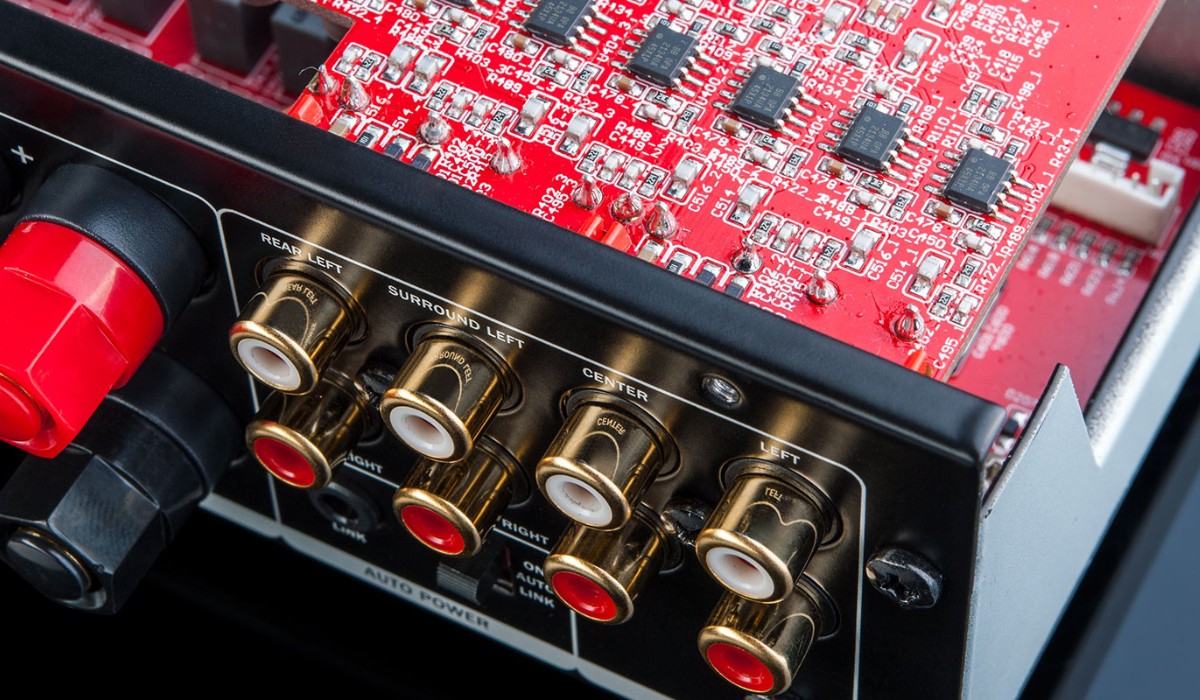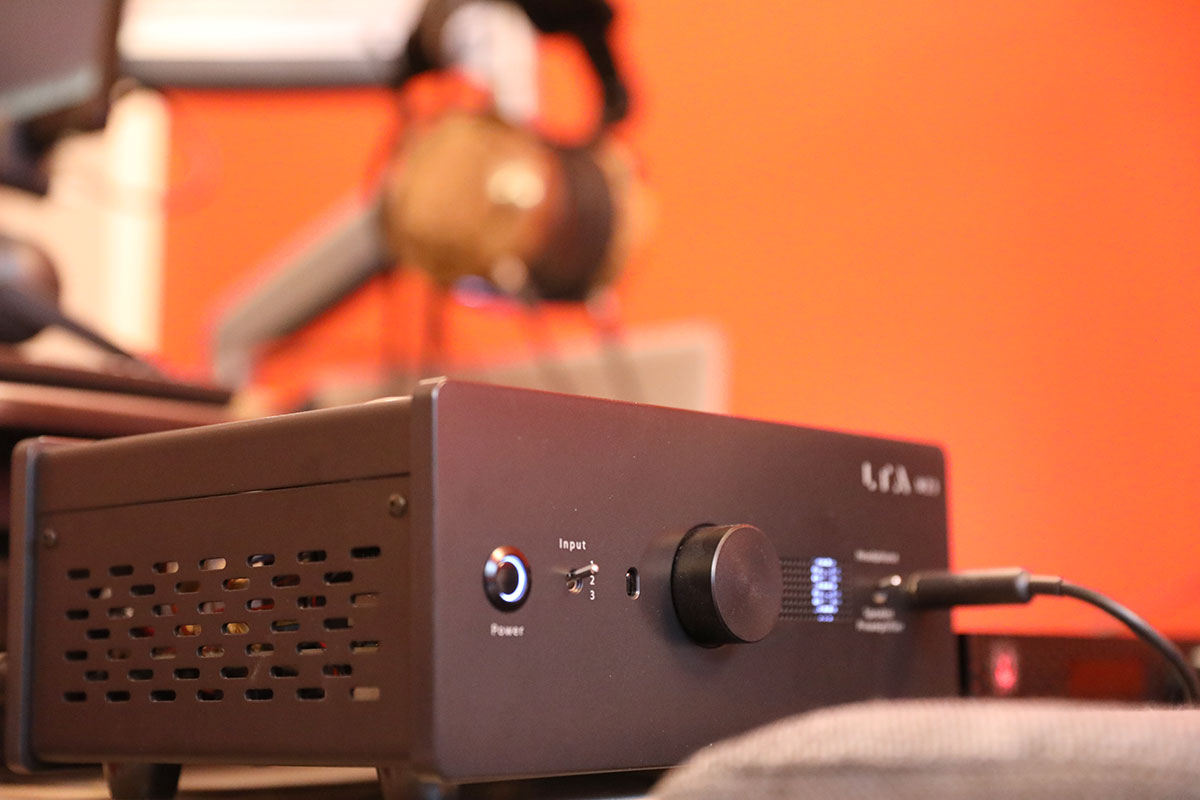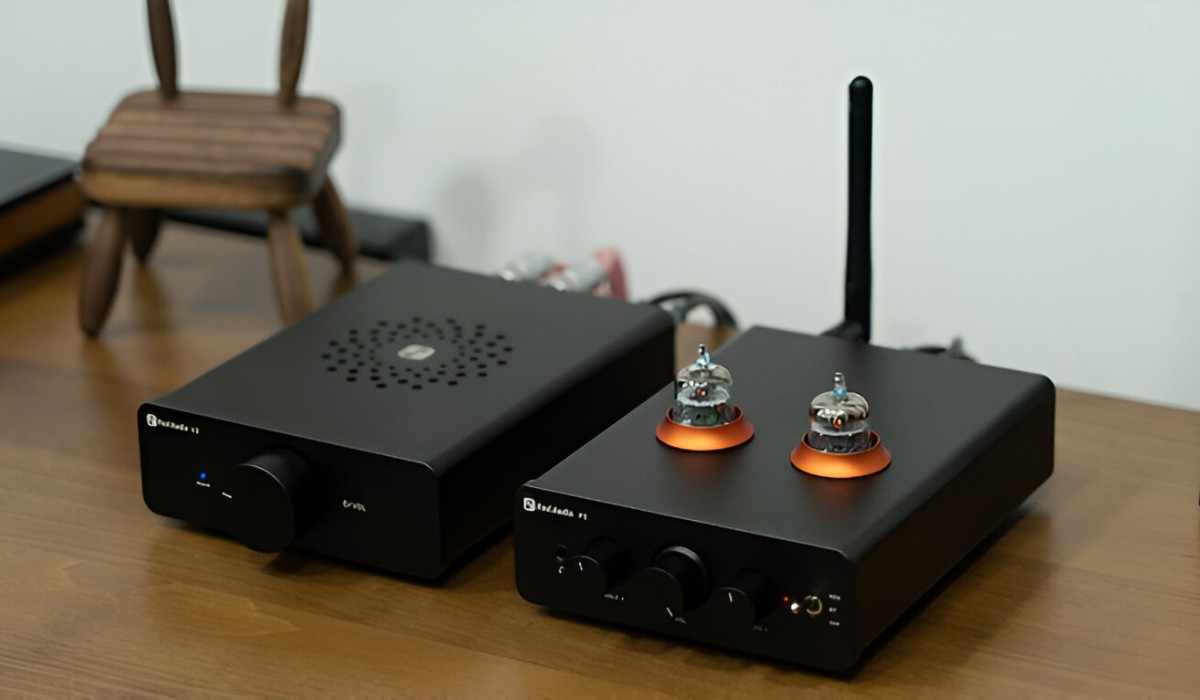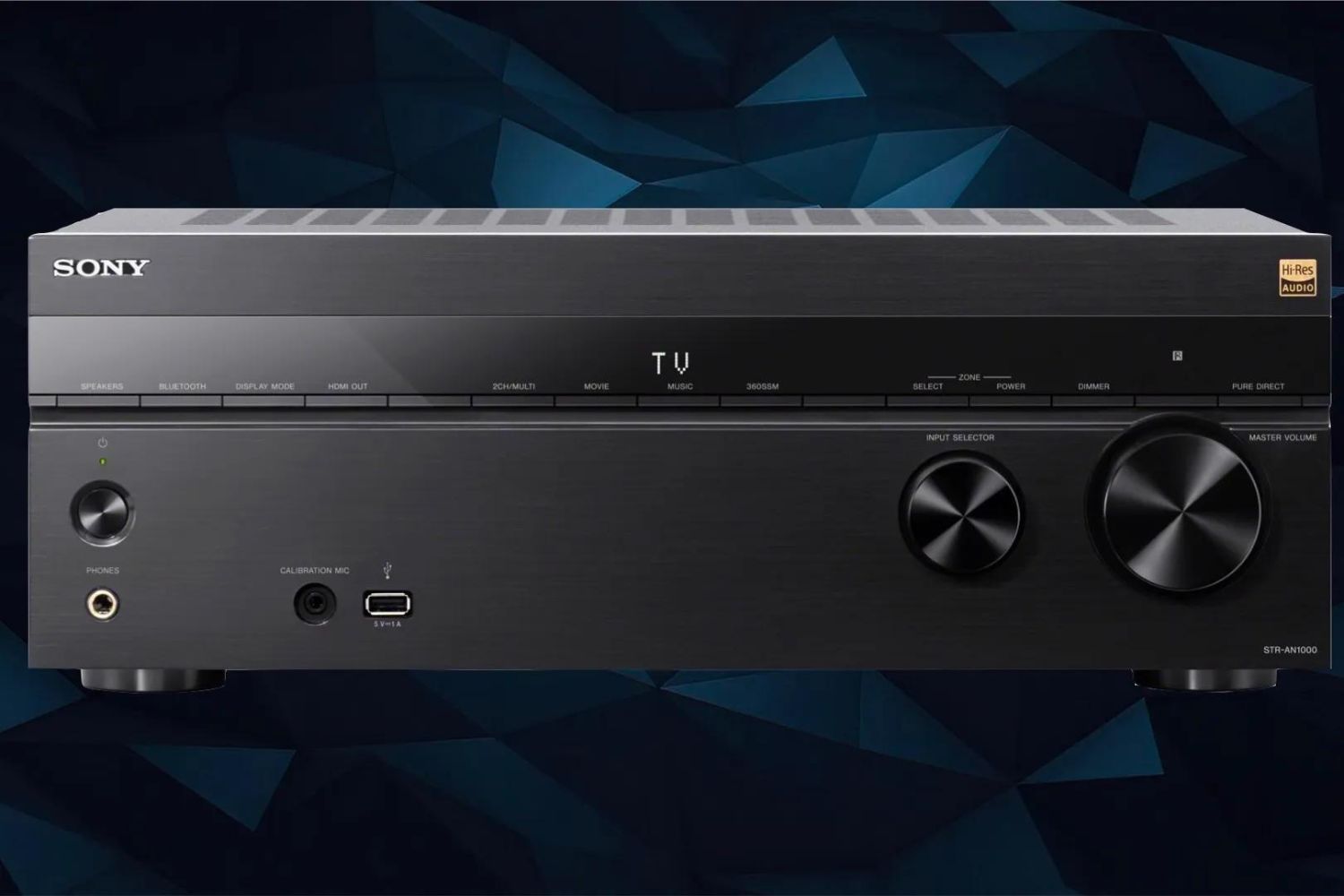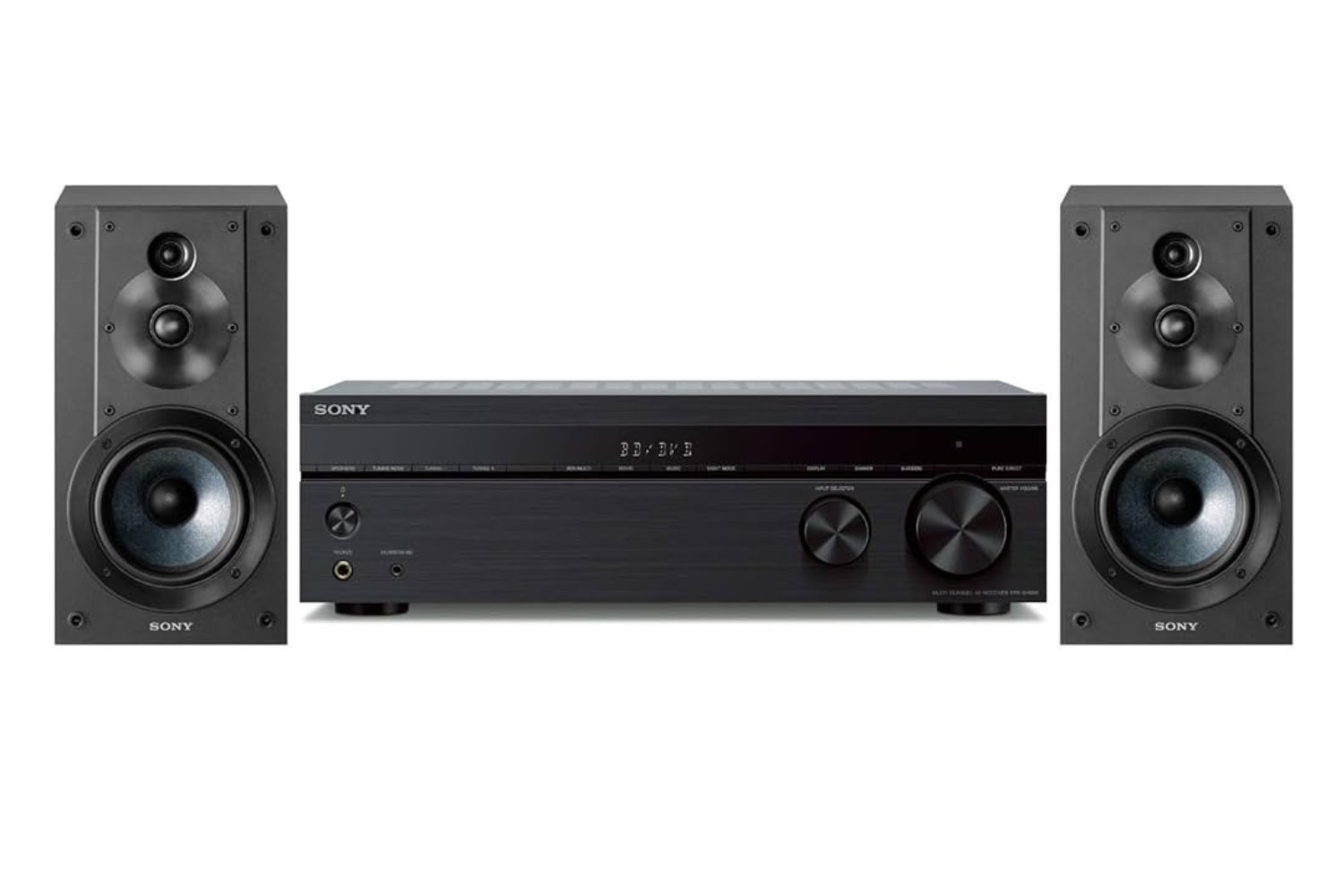Introduction
Welcome to the world of home entertainment, where audio and video seamlessly converge to create immersive experiences. At the heart of this convergence lies the AV receiver, a multifaceted component that serves as the central hub for audio and video signals in a home theater system. Whether you are a cinephile, a music enthusiast, or a casual viewer, understanding the purpose of an AV receiver is essential for optimizing your home entertainment setup.
An AV receiver, short for audio-video receiver, is a pivotal element in a home theater system, responsible for processing audio and video signals from various sources and delivering them to your speakers and display devices. This versatile device acts as a powerhouse, combining several functions to streamline and enhance your audio and video experience.
In the following sections, we will delve into the multifaceted roles of an AV receiver, exploring its capabilities in audio and video processing, amplification, source switching, room calibration, and connectivity. By understanding the purpose and functionality of an AV receiver, you can make informed decisions when selecting and optimizing this essential component for your home entertainment system.
Whether you are setting up a dedicated home theater or seeking to elevate your audiovisual experience in a living room environment, the AV receiver stands as a cornerstone of your setup, empowering you to enjoy high-quality sound and visuals with ease and flexibility. Let's embark on a journey to unravel the intricacies of this indispensable device and uncover its pivotal role in shaping your home entertainment experience.
What is an AV Receiver?
An AV receiver is a central component in a home entertainment system that serves as a nexus for audio and video signals. It integrates various audio and video processing technologies, amplification capabilities, source switching functionalities, room calibration features, and extensive connectivity options to deliver a comprehensive audiovisual experience.
At its core, an AV receiver is designed to receive audio and video signals from different sources, such as Blu-ray players, gaming consoles, set-top boxes, and media players, and process these signals to deliver high-quality sound and visuals to connected speakers and display devices. By consolidating multiple functions into a single unit, the AV receiver simplifies the setup and operation of a home theater system, offering a centralized control hub for audio and video playback.
Modern AV receivers are equipped with advanced audio processing technologies, including surround sound decoding, audio upscaling, and sound optimization features. These capabilities enable the AV receiver to decode and enhance audio signals, creating a captivating and immersive listening experience. Additionally, video processing functionalities, such as 4K upscaling, HDR (High Dynamic Range) support, and video calibration tools, ensure that the AV receiver delivers stunning visuals to compatible display devices.
Furthermore, an AV receiver incorporates built-in amplification to power the connected speakers, driving audio signals with precision and clarity. Whether it’s a stereo setup for music listening or a full-fledged surround sound configuration for cinematic experiences, the AV receiver’s amplification capabilities play a crucial role in reproducing sound with fidelity and impact.
With the ability to switch between various audio and video sources, the AV receiver offers seamless integration and control, allowing users to effortlessly navigate through different media devices and enjoy a diverse range of content. Moreover, room calibration features, such as automatic speaker setup and acoustic optimization, enable the AV receiver to adapt to the acoustic characteristics of the listening environment, ensuring balanced sound reproduction tailored to the specific room.
Connectivity is another key aspect of an AV receiver, as it provides an array of input and output options, including HDMI, digital audio, analog audio, and network connections, facilitating versatile connectivity with external devices and networked audio sources.
Overall, an AV receiver serves as a comprehensive audiovisual command center, orchestrating the seamless integration of audio and video components to deliver captivating entertainment experiences in the comfort of your home.
Audio Processing
Audio processing is a fundamental function of an AV receiver, encompassing a range of technologies and features aimed at optimizing and enhancing the quality of audio playback. One of the key aspects of audio processing in an AV receiver is surround sound decoding, which enables the device to decode multichannel audio formats, such as Dolby Atmos, DTS:X, and Auro-3D, to create immersive and spatially realistic soundscapes.
Furthermore, the AV receiver incorporates audio upscaling and enhancement capabilities, allowing it to elevate the quality of standard audio formats to achieve a more immersive listening experience. Through advanced signal processing algorithms, the receiver can enrich the audio content, expanding the soundstage and adding depth to the audio presentation.
Sound optimization features, such as room correction and equalization technologies, play a crucial role in audio processing, ensuring that the audio output is tailored to the specific acoustic characteristics of the listening environment. Automatic speaker calibration systems, such as Audyssey, MCACC (Multi-Channel Acoustic Calibration System), and YPAO (Yamaha Parametric Room Acoustic Optimizer), analyze the acoustic properties of the room and adjust the speaker settings to achieve optimal sound reproduction.
Moreover, the AV receiver may incorporate audio processing technologies designed to enhance dialogue clarity, dynamic range, and overall sonic performance. These technologies aim to address common audio playback challenges and deliver a more engaging and balanced listening experience across various content types, including movies, music, and gaming.
By leveraging advanced audio processing capabilities, an AV receiver elevates the audio experience, immersing listeners in rich, detailed soundscapes that complement the visual elements of the home entertainment experience. Whether it’s the thunderous impact of an action-packed movie scene or the delicate nuances of a musical performance, the audio processing prowess of an AV receiver enriches the overall sensory experience, captivating audiences and bringing content to life with remarkable fidelity and realism.
Video Processing
Video processing capabilities are integral to the functionality of an AV receiver, as they contribute to the delivery of stunning visual quality and seamless compatibility with a wide range of display devices. One of the primary aspects of video processing in an AV receiver is video upscaling, which enhances the resolution of lower-quality video signals to match the native resolution of the connected display, resulting in sharper and more detailed visuals.
Additionally, the AV receiver may incorporate HDR (High Dynamic Range) support, a feature that enables it to process and pass through HDR content, preserving the dynamic range and contrast of HDR-compatible video sources. This ensures that the receiver delivers vivid and lifelike images with enhanced brightness, color accuracy, and depth, providing an immersive viewing experience for HDR-enabled content.
Furthermore, advanced video calibration tools, such as color management systems and gamma correction controls, allow users to fine-tune the video output to achieve accurate color reproduction and optimal contrast, catering to the specific characteristics of the connected display device and the viewing environment.
The AV receiver’s video processing capabilities also extend to seamless video switching and pass-through, enabling it to handle multiple video sources and distribute the video signals to the display device without degradation or latency. This functionality ensures smooth transitions between different video sources, maintaining visual clarity and continuity during content playback.
Moreover, the AV receiver may incorporate video processing technologies designed to reduce video noise, enhance image sharpness, and improve motion handling, contributing to a refined and artifact-free visual presentation. These technologies work in tandem to elevate the overall visual quality, making the viewing experience more engaging and immersive.
By harnessing advanced video processing technologies, an AV receiver enhances the visual fidelity of the home entertainment experience, ensuring that users can enjoy a captivating and visually stunning display of content across various sources and formats. Whether it’s the vibrant colors of a nature documentary, the cinematic grandeur of a blockbuster film, or the immersive realism of a video game, the video processing prowess of an AV receiver elevates the visual immersion, bringing content to life with remarkable clarity and vibrancy.
Amplification
Amplification is a cornerstone of the functionality of an AV receiver, as it encompasses the device’s ability to power and drive audio signals to connected speakers with precision and clarity. The receiver’s built-in amplification serves as the driving force behind the reproduction of sound, ensuring that the audio signals are delivered with the necessary power and fidelity to create an immersive listening experience.
Modern AV receivers are equipped with multichannel amplifiers that can drive various speaker configurations, including stereo setups, surround sound systems, and immersive audio configurations such as Dolby Atmos and DTS:X. The amplification capabilities of the receiver are tailored to accommodate the diverse speaker layouts and channel configurations, delivering balanced and dynamic audio output across the entire soundstage.
Furthermore, the AV receiver’s amplification prowess extends to dynamic power handling, enabling it to adapt to the demands of different audio content, from quiet dialogue scenes to explosive action sequences. The ability to deliver clean and distortion-free power to the speakers ensures that the audio reproduction remains faithful to the source material, capturing the nuances and impact of the sound with accuracy and authority.
In addition to driving the primary speakers in a home theater setup, the AV receiver’s amplification may also power additional zones or audio channels, allowing users to create a multi-room audio environment or distribute audio to secondary listening areas within the home. This versatility enables users to enjoy synchronized audio playback across different zones, expanding the reach of the home entertainment experience.
The amplifier section of an AV receiver is designed to maintain signal integrity and minimize interference, ensuring that the audio signals remain pure and unadulterated as they are amplified and distributed to the speakers. This attention to signal integrity contributes to the overall fidelity and transparency of the audio reproduction, allowing listeners to experience the full sonic impact of their favorite content.
By leveraging robust amplification capabilities, an AV receiver empowers users to immerse themselves in a captivating audio experience, where every sonic detail is faithfully reproduced with clarity and impact. Whether it’s the delicate nuances of a musical performance or the thunderous dynamics of a movie soundtrack, the amplification prowess of an AV receiver forms the bedrock of an engaging and immersive audio experience, enriching the overall home entertainment journey.
Source Switching
Source switching is a pivotal function of an AV receiver, enabling seamless integration and control of multiple audio and video sources within a home entertainment system. The receiver serves as a central hub that consolidates various media devices, such as Blu-ray players, gaming consoles, cable or satellite boxes, media streamers, and audio playback devices, allowing users to effortlessly switch between different sources and enjoy a diverse range of content.
One of the key benefits of source switching in an AV receiver is the convenience it offers to users, eliminating the need to manually reconfigure audio and video connections when transitioning between different media devices. Whether it’s switching from watching a movie on a Blu-ray player to playing a video game on a console, the receiver streamlines the process, providing a unified interface for managing and accessing the connected sources.
Furthermore, the AV receiver’s source switching capabilities extend to audio and video synchronization, ensuring that the audio signals remain in perfect harmony with the corresponding video content. This synchronization is crucial for delivering a seamless and immersive multimedia experience, where audio and video elements align flawlessly, enhancing the overall coherence and enjoyment of the content.
Moreover, the receiver’s source switching functionality may encompass advanced control features, such as HDMI CEC (Consumer Electronics Control) and IP control, enabling users to manage and switch between connected devices using a single remote control or a smart device. This streamlined control mechanism simplifies the operation of the home entertainment system, offering a user-friendly and intuitive interface for accessing and managing the various media sources.
Additionally, the AV receiver’s source switching capabilities contribute to the flexibility and versatility of the home entertainment setup, allowing users to customize their audio and video playback experiences based on their preferences and content choices. Whether it’s accessing different streaming services, switching between gaming and media playback, or integrating external audio sources, the receiver provides a centralized platform for accommodating a diverse array of media devices.
By facilitating seamless and intuitive source switching, an AV receiver empowers users to curate their home entertainment experiences with ease and flexibility, ensuring that they can effortlessly navigate through a myriad of audio and video sources to access their favorite content. Whether it’s enjoying a movie marathon, gaming with friends, or indulging in music playback, the source switching capabilities of an AV receiver streamline the process, offering a cohesive and user-centric approach to managing multimedia content within the home environment.
Room Calibration
Room calibration is a critical aspect of an AV receiver’s functionality, encompassing a suite of technologies and features designed to optimize the audio performance based on the acoustic characteristics of the listening environment. By analyzing the acoustics of the room and the placement of speakers, the receiver’s room calibration capabilities aim to tailor the audio reproduction to achieve balanced sound and optimal listening experiences.
One of the key components of room calibration is automatic speaker setup, a feature that enables the receiver to detect and configure the speaker layout, size, distance, and level settings to ensure accurate and cohesive sound reproduction. By automating the setup process, the receiver simplifies the initial installation and optimization of the speakers, allowing users to achieve optimal audio performance without the need for complex manual adjustments.
Furthermore, room calibration technologies may incorporate acoustic measurement systems, such as microphone-based calibration tools, that analyze the acoustic properties of the listening environment and generate precise adjustments to the audio settings. These measurements account for factors such as room reflections, resonances, and frequency response irregularities, allowing the receiver to compensate for acoustic imperfections and deliver more accurate and balanced sound reproduction.
Equalization technologies play a crucial role in room calibration, as they enable the receiver to apply corrective measures to the audio signals, compensating for frequency response variations and room-induced acoustic anomalies. By implementing parametric EQ (Equalization) or graphic EQ controls, the receiver can fine-tune the audio output to achieve a more linear and natural sound signature, addressing specific frequency peaks or dips that may impact the overall sonic performance.
Moreover, the AV receiver’s room calibration capabilities may extend to dynamic volume management and tonal balance adjustments, ensuring that the audio reproduction remains consistent and well-suited to the listening environment. These features contribute to a more immersive and balanced listening experience, allowing users to enjoy content with greater clarity and fidelity.
By harnessing advanced room calibration technologies, an AV receiver empowers users to optimize their audio setups and achieve tailored sound reproduction that adapts to the unique acoustic characteristics of their listening spaces. Whether it’s compensating for room resonances, optimizing speaker placement, or fine-tuning the audio response, the room calibration capabilities of an AV receiver enhance the overall sonic performance, ensuring that users can enjoy a more accurate and immersive audio experience tailored to their specific listening environments.
Connectivity
Connectivity is a pivotal aspect of an AV receiver, encompassing a diverse array of input and output options that facilitate seamless integration with audio and video sources, display devices, and networked audio systems. The receiver’s connectivity features play a crucial role in enabling users to access and distribute content from various media devices, ensuring versatility and compatibility within the home entertainment ecosystem.
One of the primary connectivity interfaces in an AV receiver is HDMI (High-Definition Multimedia Interface), which serves as a universal conduit for transmitting high-definition audio and video signals between the receiver and compatible source devices, such as Blu-ray players, gaming consoles, and media streamers. HDMI connectivity supports features such as 4K Ultra HD, HDR (High Dynamic Range), HDCP (High-bandwidth Digital Content Protection), and ARC (Audio Return Channel), offering a comprehensive and standardized interface for high-quality audiovisual transmission.
Furthermore, the AV receiver may feature an array of digital audio inputs, including optical and coaxial connections, which accommodate audio signals from sources such as digital audio players, CD/DVD players, and gaming consoles. These inputs support multichannel audio formats, ensuring that the receiver can process and decode a wide range of digital audio content with fidelity and precision.
Analog audio inputs, such as RCA and balanced XLR connections, provide flexibility for integrating legacy audio sources and analog playback devices, allowing users to connect turntables, cassette decks, and other analog audio equipment to the receiver for playback and processing.
Network connectivity is another essential component of an AV receiver’s connectivity suite, enabling access to streaming services, internet radio, and networked audio content. By incorporating Ethernet and Wi-Fi connectivity, the receiver can access online streaming platforms, receive firmware updates, and interface with networked audio devices, offering a gateway to a vast array of digital audio content and online services.
Additionally, the AV receiver’s connectivity options may extend to Bluetooth and AirPlay support, allowing users to wirelessly stream audio content from compatible mobile devices, tablets, and computers to the receiver, expanding the flexibility and accessibility of audio playback within the home environment.
By providing a comprehensive range of connectivity options, an AV receiver empowers users to seamlessly integrate and access a diverse array of audio and video sources, ensuring that they can enjoy a rich and versatile home entertainment experience. Whether it’s connecting traditional audiovisual components, accessing online streaming services, or embracing wireless audio streaming, the connectivity features of an AV receiver offer a cohesive and adaptable platform for accessing and enjoying multimedia content within the home environment.
Conclusion
The AV receiver stands as a central pillar of home entertainment, offering a comprehensive suite of audio and video processing capabilities, amplification prowess, source switching functionalities, room calibration features, and extensive connectivity options. As the nucleus of a home theater system, the AV receiver serves as a versatile and indispensable hub that orchestrates the seamless integration and delivery of audiovisual content, empowering users to immerse themselves in captivating entertainment experiences within the comfort of their homes.
By delving into the multifaceted roles of an AV receiver, we have gained insight into its pivotal contributions to the home entertainment landscape. From decoding immersive surround sound formats to upscaling video content, from driving speakers with precision to seamlessly switching between media sources, the AV receiver’s capabilities transcend traditional audio and video playback, offering a holistic and immersive approach to home entertainment.
Furthermore, the room calibration technologies integrated within AV receivers ensure that the audio reproduction is tailored to the specific acoustic characteristics of the listening environment, allowing users to experience balanced and optimized soundscapes that adapt to their unique spaces. The extensive connectivity options provided by AV receivers facilitate versatile integration with a wide range of audio and video sources, offering accessibility to diverse content and streaming services while accommodating legacy and modern playback devices.
As technology continues to evolve, AV receivers remain at the forefront of innovation, incorporating advanced features such as voice control, multi-room audio distribution, and compatibility with emerging audio and video standards. This continual evolution ensures that AV receivers remain at the vanguard of home entertainment, adapting to the changing landscape of audiovisual technologies and user preferences.
In conclusion, the AV receiver embodies the convergence of audio and video technologies, offering a cohesive and immersive platform for users to indulge in high-quality entertainment experiences. Whether it’s the thrill of a blockbuster movie, the sonic intricacies of a music concert, or the excitement of gaming, the AV receiver stands as a steadfast companion, enriching the home entertainment journey with its versatility, performance, and adaptability.









